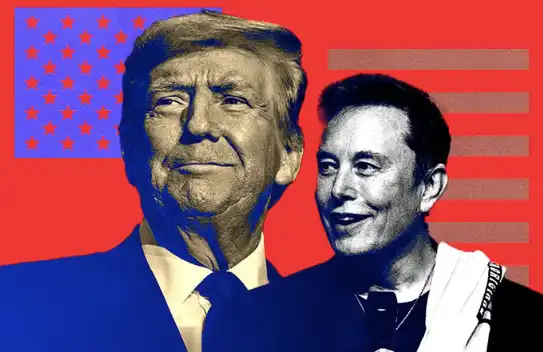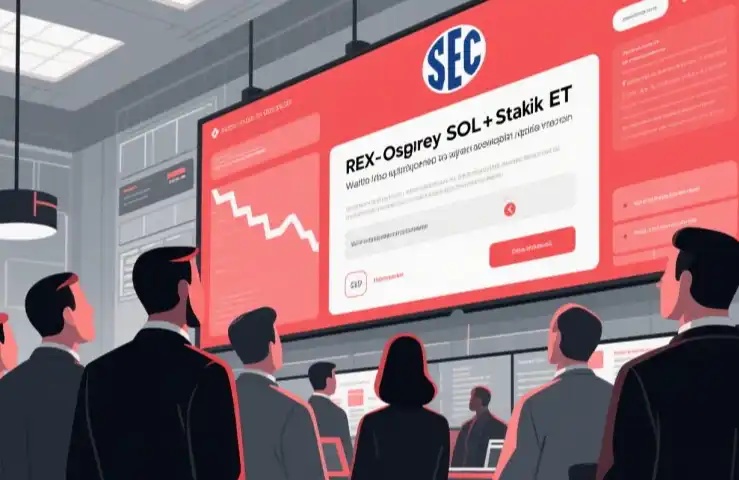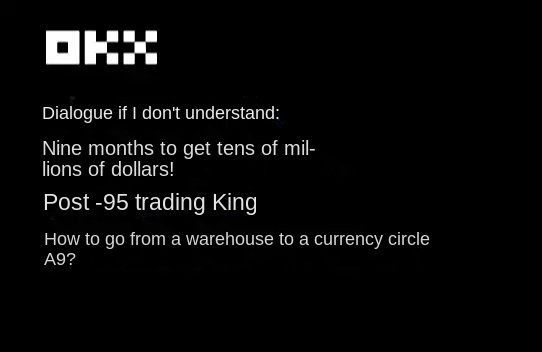How to design sustainable incentives in Web3?
Original Title: "Web3 Should Get Better Returns"
Original Author: 3ijan.eth
Translated by: Block unicorn
This article is quite long. If you don't want to delve into it, you can read the summary.
Money is not the ultimate reward - connections and culture are.
The growth of social and cultural capital is slow but persistent over a long period of time.
In order to meet the next bull market, the rewards in the crypto industry must shift from "fast food" to "slow food rewards".
Prologue
"When we throw money around - they will come."
She hopes to attract users to use her DeFi protocol, that's my friend's response to my question.
Rewards are like dopamine in the brain, they fuel the fire and attract users, enticing them to stay. Most importantly, they are one of the core features of Web3.
Unfortunately, my friend's response illustrated today's common sense. Most people believe that giving money can indeed attract users. However, this is also a problem - because it is not true. Although rewarding the right behavior creates a positive feedback loop for growth, rewarding the wrong behavior is like a death sentence for the product and community.
除了产品的实用性,资本可以说是最有力的回报。但资本有更多的色彩,而不仅仅是金钱。
Translation:In addition to the practicality of the product, capital can be said to be the most powerful return. However, capital has more colors than just money.
This article aims to provide better guidance for those who design encryption rewards. The article is based on the theory of Pierre Bourdieu, a sociologist who analyzed that the existence of capital is longer than that of encryption.
First, we will delve into three different types of capital that drive social interaction. Then, we will use Burdieu's framework to more clearly depict the different types of incentives in Web3. Finally, we will derive incentive strategies for builders.
Types and Subtypes of Capital
When most people think of capital, they think of money or assets. However, according to French sociologist Pierre Bourdieu (1930-2002), this is only one aspect of the reward. In his analysis, capital mainly has three types: economic capital, social capital, and cultural capital.

Bourdieu's Three Types and Subtypes of Capital
Economic Capital
Let's start with the capital type that we are most familiar with: economic capital. According to Boudreaux, this involves anything that can be directly exchanged for currency, such as legal tender and precious metals. It can also take the form of ownership rights that pay dividends, such as apartments or stocks. It is also something that you pay taxes on and include in your balance sheet. This is the most liquid form of capital. Economic capital can easily be transferred to others.
社会资本
translates to
Social Capital
Social capital is the value that a person can obtain from their relationships. Social capital answers questions such as: Who do you know? Based on your social status, which potential circles do you belong to? It is recognition within a group, as well as recognition from those who are not members. Social capital is expressed through emotions such as gratitude, unity, respect, and friendship.

Another aspect of social capital is membership. This is a benefit of being part of a group. Membership is exclusive; there are others who are not members. In addition, there are some entry barriers that make it harder for others to join. These barriers themselves take the form of different types of capital. For example, when you want to be part of a rural club, you have to pay a fee (economic capital). Cultural capital (which will be discussed in detail later) comes into play when we need certification to join a group. For example, doctors need a certificate to become a member of the "Doctor's Club". Social capital also opens doors, such as when a club requires potential members to provide recommendations. We are all multiple members: adults, artists, employees, family members. Each member has the reputation of their respective group.
In order to protect the social capital of the group, exclusivity is necessary. This also applies to "inclusive" groups. Existing members of the group have a great interest in carefully designing the threshold, as each new member can either increase or destroy the group's social capital. Imagine being able to join the "Doctor's Club" and start treating patients simply by paying a fee.
Defending the social capital of a group - such as a family, country, political party, club, or association - is especially the job of elected leaders, who possess concentrated social capital because group members have delegated their individual decision-making power to them.
Social capital is the reason for recommendation and the success of the recommender. We intuitively believe in the recommendations of friends and experts because we know that if the information is not good, their social capital will be affected.
Boudier continued to point out:
Social capital has a strong multiplier effect. The wider a person's network, the more power their money has. For example, the stronger an investor's network, the more unique ways she can find to deploy it. Moreover, social capital deteriorates over time, which is why we must cultivate our networks. You may be able to purchase a lifetime membership for a rural club, but if you never show up, it won't yield the same dividends.
Cultural Capital
Bourdieu's third type of determination is cultural capital, which consists of material and non-material assets that enable a person to navigate social life, interact with groups, and express their identity. Cultural capital takes three forms: embodied state, objectified state, and institutionalized state.
The concretization of status refers to something entering someone's body. It is an external wealth invested in improving oneself. This includes symbolic assets such as sports, skills, knowledge, education, teaching, taste, and etiquette. The embodiment of cultural capital takes a long time, and its impact is lasting. Once we learn a skill, we will benefit from it again and again. At the same time, low cultural capital, such as impoliteness, makes it difficult for a person to find friends and establish healthy relationships. The cultural capital under concretization must be earned. It is bound to its holder. Just as no one can go to the gym for you, no one can study for you.
On the contrary, the cultural capital in its objectified state is transferable. Are you wearing a dAppcon shirt or a Patagonia vest? Are you commuting to work in an SUV or public transportation? Are you eating Oreos or organic food? Cultural commodities such as clothing, images, books, instruments, and machines are cultural capital that can be sold.
Finally, a state in a institutionalized state is certified cultural capital. Do you have a high school or doctoral degree? In these cases, the entire institution will prove your skills. The scarcer the qualifications, the higher the profit potential. Institutions must ensure that such certifications are earned, not purchased. Otherwise, the value of the certificate itself will be diluted. Because if it can be bought, it is worthless.
Okay, we know that "cash is not king" is not true. Connections and culture also dominate society. But which type of capital is the most important?
Three types of capital in daily life
When we try to decide which type of capital to optimize for, it turns out that daily life requires us to use all types of capital to achieve our goals. Each has different characteristics. Money is quickly flowing, but social and cultural capital has a more lasting impact.
Three types of capital in operation
Let's take a look at how to use various types of capital to tackle challenges in daily life, such as joining an electronic music club with strict entry requirements.
First of all, how did you get through security? Do you have the appropriate appearance? This (objectified) cultural capital signifies your understanding of the cultural codes involved. Another way to gain entry is to use your social capital. For example, if you know people of higher status, have them put you on the guest list. This will give you a big discount in terms of what to wear and how to behave at the door. (If you have really good connections, you can basically go in naked.) If you do make it to the ticket counter, it's time to pay up (economic capital). Now, cultural capital may not help you get a discount. However, social capital can when your position on the guest list allows you to enter freely.

Cultural Capital: Holders and Bodyguards
Fast Food and Slow Food Capital
Economic capital is a type of fast food capital, while social and cultural capital are a type of slow food capital. Although economic capital can quickly emerge from social capital (for example, obtaining credit due to your connections) and cultural capital (for example, selling your knowledge for money), buying cultural and social capital instead of earning it is either impossible or will produce counterproductive results. For example, I can use money to buy a second-hand hoodie and yoga pants (materialized cultural capital) to make myself look like V God. However, this cannot turn me into V God. Obtaining his knowledge (cultural capital) and connections (social capital) may take me more than a lifetime. Buying cultural capital may even turn into a very bad situation: if the die-hard members of ETH see that I am only imitating V God's appearance without gaining his recognition, they will expose me as a fake.
Similarly, it is obvious that sending 1 BTC to a stranger will not make them your friend. You cannot buy social capital either. If you try, this kind of relationship will not have the same quality as the friendship we understand.
Compared to money, what society requires us to spend more of in return is time. You can buy a T-shirt from dAppcon, but you can only use it to establish social relationships if you have been there. Personalized gifts are considered more valuable than just sending Amazon vouchers because one spends more time on another person.
The slow accumulation of cultural and social capital comes with a strong side effect: you can consume it multiple times. Money, on the other hand, can only be spent once. Instead, social and cultural capital grows with each use. According to Bourdieu, this is why multi-generational dynasties are not built on money, but on relationships and culture.
Since we have already understood how these three types of capital drive social interaction, we can now explore their roles in Web3.
Capital in Cryptography
Let's map the encryption rewards to a triple model. This will show that economic capital is relatively mature, while we are just beginning to develop and establish the potential of social and cultural capital that is on par with encryption rewards.

Cryptocurrency rewards as a driving force for economic, social, and cultural capital
经济资本在 Web3
Economic Capital in Web3
Encryption is very suitable for establishing economic capital. Starting with Bitcoin, it is the purest form of economic capital, and economic capital is the most developed paradigm in encryption.
We can include widely used public utility tokens in economic capital. In order not to be classified as securities, Web3 projects argue that they do not allocate funds to users. Brave browser claims that its BAT Token is "not a cryptocurrency, but a functional token". BrainTrust, a talent network, argues that its token is not money, but more like a gift voucher. Decentralized hedge fund Numer.ai distributes NMR Tokens to contributors. If Pierre Bourdieu takes over the SEC, these projects will face difficult times. Even though some of these tokens are needed to promote on-chain utility, ultimately, they can be quickly exchanged for fiat currency - therefore, they are closer to economic capital.
Property rights are a subtype of economic capital, covered by the NFT world in Web3. In the NFT world, protocols such as Nina allow creators to earn royalties on secondary sales.
社会资本在 Web3
translates to
Social Capital in Web3
Let's take a look at social capital in Web3. Bourdieu explains social capital from the perspectives of relationships, membership identity, and power agency.
The reward or enhancement of encryption in this mode and its connection with others is still in its infancy. Reputation points on the leaderboard have always been a popular tool for describing social status in the encryption environment, but they are one-dimensional. Interesting experiments related to social interaction include Lens, which allows users to have their own social graph, and Coordinape, a salary tool based on points given by group members to each other.
However, what makes these connections valuable is emotion, and these emotions are difficult to generate. While cultivating friendship and gratitude is a great goal for a product, can you use emotion as a token - or can you?
Membership system is a subtype of social capital. Web3 provides tools for paying and earning membership.
Starbucks and Nike recently launched on-chain membership programs to enhance customer experience. Other examples of Web3-enabled membership authorization include CPG (a Web3 incubator product) and ENS domains.
Although the economic background of paying members may be significant in the game, paying members also gain attractiveness. For example, POAP, a proof of attendance (online) for events, is distributed to capture moments shared with others. By holding POAP, one becomes a member of the community.
Finally, the authorized form of social capital has also gained significant importance, especially during the DeFi Summer period. Through airdrops or liquidity mining programs, active distribution of governance tokens is used to attract users. However, these tokens are not currency, but rather the right to make decisions for the treasury or protocol. Some projects, such as Compound, have equipped their governance with an authorization that allows the community to concentrate decision-making power in the hands of a few possibly well-informed decision-makers.
Projects like Otterspace are researching solutions to decouple the authorization and economic incentives of DAOs. OP is also moving in a similar direction, with its Token House separated from Citizen House. While Token House consists of hundreds of thousands of airdropped addresses, Citizen House is an experiment aimed at providing funding for public products managed by selected, non-transferable, soul-bound Token holders.
文化资本在 Web3
translates to
Cultural Capital in Web3
Specific cultural capital is unmarkable. No one can complete it for you, and no one can learn it for you. Web3 won't change this (sorry).
On the other hand, the materialized cultural capital is growing rapidly in Web3. NFTs serve as the foundation for unique digital art, in-game objects, and digital fashion. As the metaverse evolves, cultural assets that can be purchased or earned will become increasingly important.
Finally, institutionalized cultural capital is still in its early stages, but it is constantly improving with the development of Verifiable Credentials (VC) and Soul-Bound Tokens (SBT). The latter binds NFTs to specific wallets, giving them the credibility of issuing institutions. These decentralized credential models can be used to verify users' certificates (such as driver's licenses) and prove achievements in games, protocols, or courses (such as Buildspace).
Web3 is catching up quickly, not only in terms of economic benefits, but also in terms of social and cultural rewards. What does this mean for builders?
Summary
We start this article with a typical problem faced by builders in Web3: my friend wants to use rewards to attract users to her DeFi protocol. We will also end with this, and here are the strategies she can take from our analysis.

Separation of Powers
If this analysis can teach us anything, it is that: in the appropriate context, carefully choose the appropriate rewards. Economic capital operates quickly and can be used to purchase food. The development of relationships and culture is slower, but will have long-term effects.
Are you building a DeFi protocol and looking to reward users who make recommendations? Then it makes perfect sense to distribute rewards focused on economic value. After all, that's why users come here. At the same time, integrating patterns like leaderboards will open up a new dimension for users who previously only came for money. "They come here for money, but they stay for the community." Bourdieu didn't say that. But he could have.
One interesting way to combine social incentives with economic incentives is through a dual Token system. Token 1 is a reputation point that can be accumulated but not spent. The other is tied to the right to earn dividends and is called Token 2. This is a type of liquid Token that can be traded on the open market.
Scarcity is King
If everyone has it, then it's not worth having. These three types of capital all share a common principle, which is that their value is a function of scarcity. If you issue currency rewards without the economics of tokens, and these rewards are designed for long-term value accumulation, then you are on a typical path of dilution and dumping.
Social and cultural capital are no different. They should be earned through hard work and rewarded to those who consistently contribute. Are you using reputation points? Make sure you can't buy them. Make sure you can't spend them. Because once you can buy a reputation point, it's worthless.
From Short-Term to Long-Term
Economic capital is short-term tradable, and it must be, otherwise it will not be liquid. But if you have long-term goals, you can achieve long-term incentives by issuing a schedule, locking period, or rewarding with lower-trading social and cultural capital. Because economic capital is fast food property. On the contrary, social and cultural capital is slow food property. Can you design rewards to establish social and cultural capital for your users? This will bring closer connections to your community and product. Because cultural capital may be an effort spanning generations. In this financialized and fast-paced crypto world, it may be meaningful to learn from an unusual example - such as the slogan of the watch brand Patek Philippe: "You never really own a Patek Philippe, you merely look after it for the next generation." So what lasting crypto rewards can you give to your users to pass down for generations?
Finally, special thanks to Holger Niemann, Johannes Jensen, Jandrik Poloczek, and Bernard Schmidt for their feedback.
Original article link
Welcome to join the official BlockBeats community:
Telegram Subscription Group: https://t.me/theblockbeats
Telegram Discussion Group: https://t.me/BlockBeats_App
Official Twitter Account: https://twitter.com/BlockBeatsAsia
 Forum
Forum OPRR
OPRR Finance
Finance
 Specials
Specials
 On-chain Eco
On-chain Eco
 Entry
Entry
 Podcasts
Podcasts
 Activities
Activities







